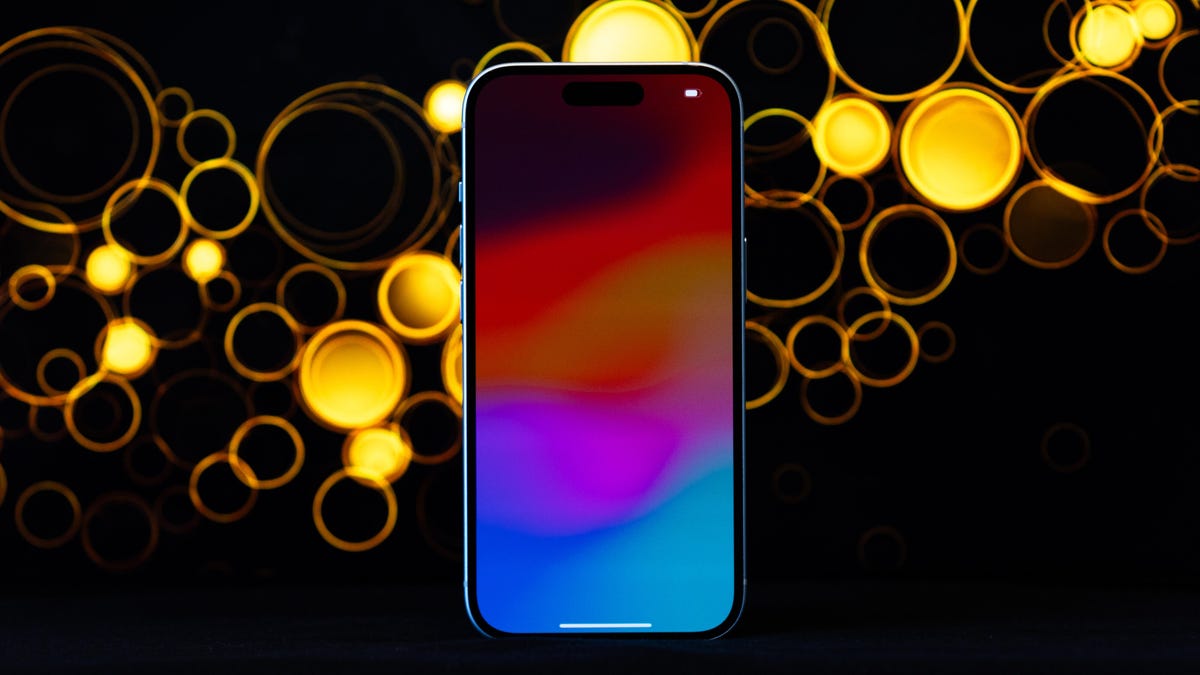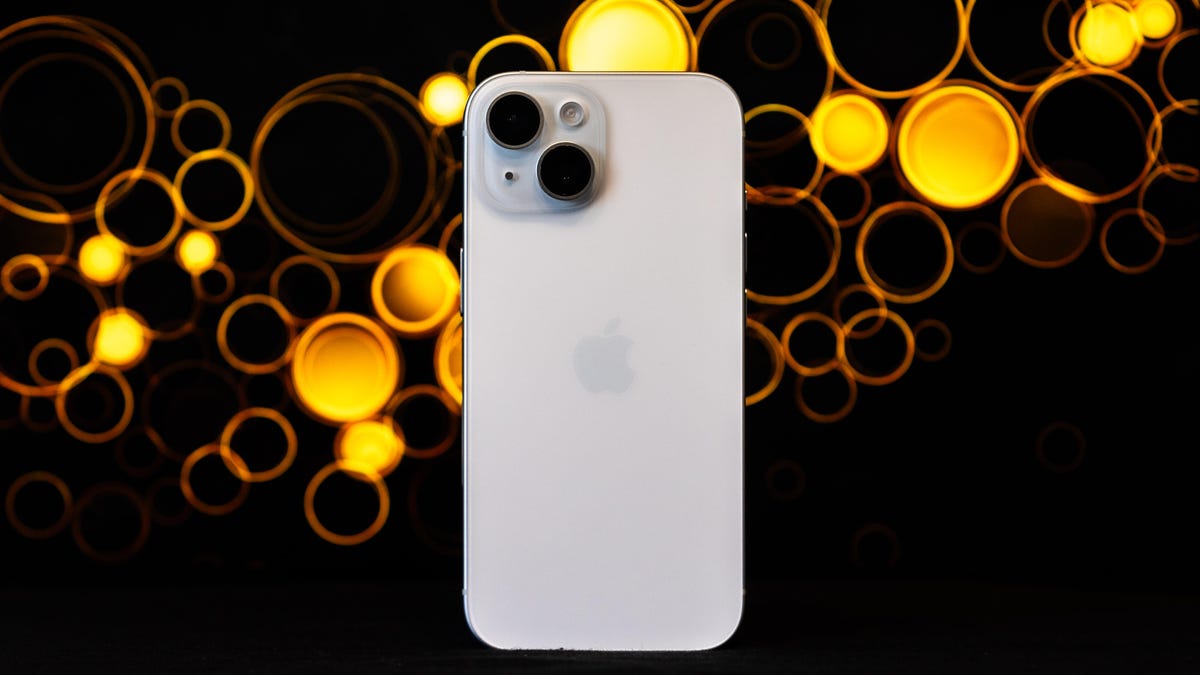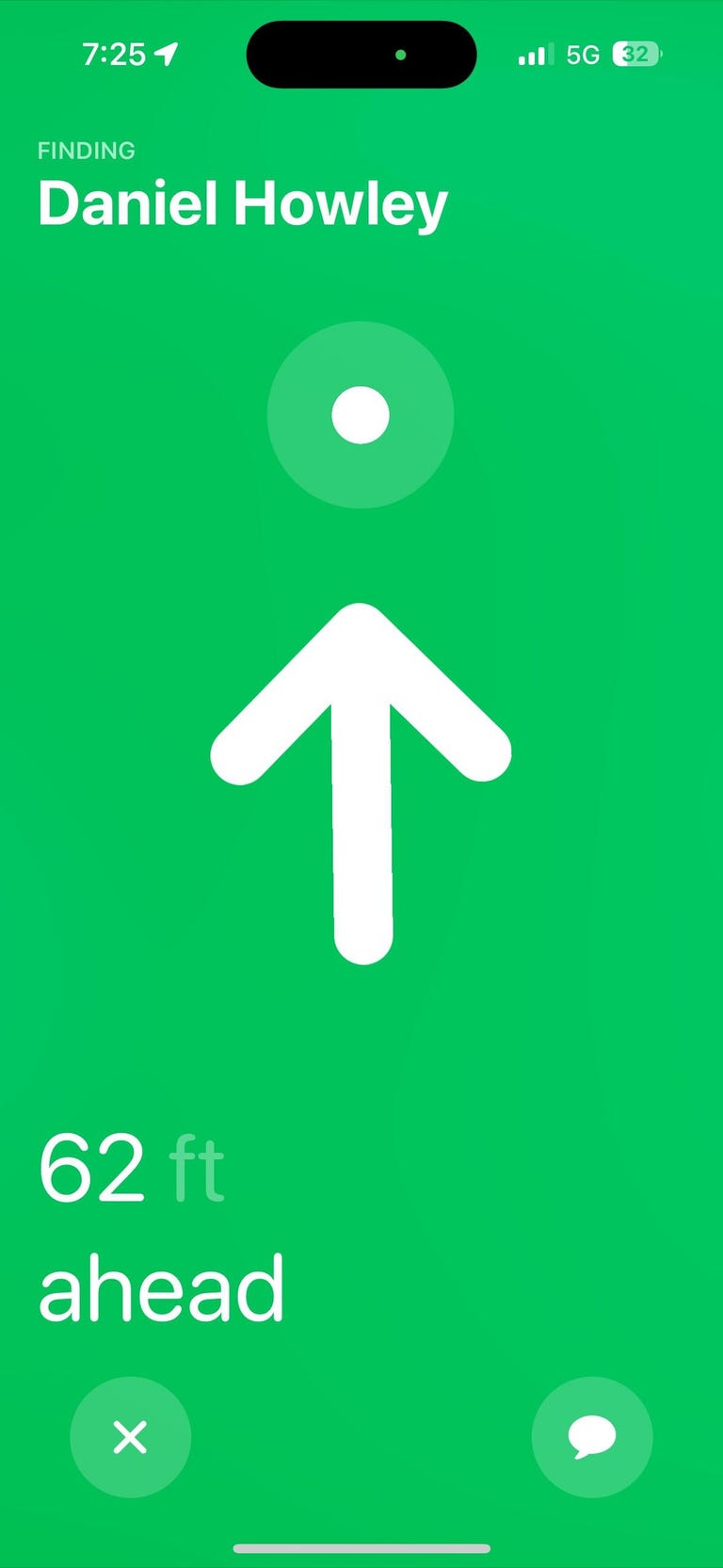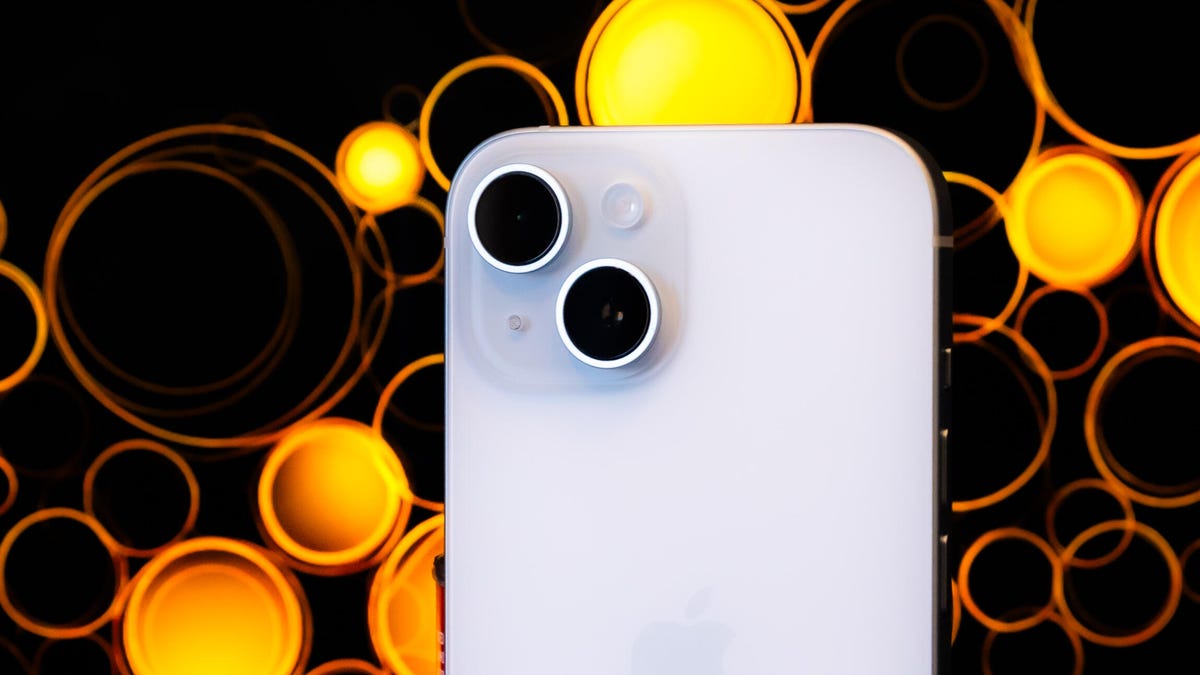Technologies
1 Month Later, the iPhone 15 Is Still an Excellent Upgrade
The iPhone 15’s long battery life and excellent camera make it a top choice for people coming from an older phone.

The iPhone 15 initially won me over with its sleek matte design; convenient USB-C charging; easier multitasking thanks to the Dynamic Island; and much improved camera. Even though some of the iPhone 15’s standout features debuted last year on the iPhone 14 Pro, they still felt fresh and new to someone like me, who was coming from an iPhone 12.
One month later, those opinions still hold true. The iPhone 15 had a somewhat rocky launch, after a wave of news reports and social media posts suggested that some iPhone 15 Pro models were overheating. But I experienced only one instance in which my iPhone 15 felt noticeably warm, leading me to believe this wasn’t a consistent problem. Apple also released a software update to address the issue, so my overall opinion of the phone remains unchanged.
Now that I’ve had more time with the iPhone 15, I’ve also gotten a better understanding of its battery life, charging speeds and overall performance. I also had the chance to try out the new Precision Finding feature for pinpointing a friend’s location, which works only with other iPhone 15 models.
A closer look at battery life and charging

I’ve been using the standard 6.1-inch iPhone 15 for almost a month, and it’s more than capable of getting through a full day on a single charge. I rarely find myself reaching for a charger during the workday, and I’ve never worried that I wouldn’t be able to make it to an after-work event like happy hour with co-workers.
I recently attended a close friend’s wedding, and it was probably the busiest day I’ve had since switching to the iPhone 15. My day started with hair and makeup at around 9:30 a.m. and ended the following morning, once the after-party wrapped up at about 2:30. Despite charging for only a few minutes before I headed to the venue, the iPhone 15 still lasted the whole day — even after streaming music for several hours as the bridal party was getting ready.
Still, it’s worth noting that long battery life is typical of new smartphones, since the battery is fresh. As Apple explains on its website, a battery’s capacity decreases as it ages. The battery in the iPhone 15 I’ve been using still has 100% of its maximum capacity, while the one in my 3-year-old iPhone 12 is down to 86%.
In addition to anecdotal information on battery life, CNET reviewers run two battery tests on smartphones: a 45-minute general usage test and a 3-hour video streaming test. The general test is meant to see how much everyday tasks like scrolling through social media and making a video call drain the battery. The second test shows how video streaming taxes the device’s battery. We measure the phone’s battery life every hour during the streaming test.
Take a look at the results below to see how the iPhone 15 and 15 Plus fared during these tests.
iPhone 15 and 15 Plus Battery Life
| iPhone 15 | iPhone 15 Plus | |
| 45-minute test | From 100% to 95% | From 100% to 98% |
| Video streaming test | 1 hr: 97%; 2 hrs: 91%; 3 hrs: 85% (60Hz) | 1 hr: 99%; 2 hrs: 94%; 3 hrs: 89% (60Hz) |
The iPhone 15 can replenish 50% of its battery in 30 minutes using a 20W adapter, while the 15 Plus can refill the same amount in 35 minutes, according to Apple. The iPhone 15 Plus seems to line up with that, charging from 20% to 67% in 30 minutes. The regular iPhone 15, on the other hand, went from 20% to 73% in the same period of time, also aligning with Apple’s estimates.
The iPhone 15 and 15 Plus support 7.5W charging when using a standard Qi wireless charger and 15W when using a MagSafe charger. And the difference is very noticeable. The iPhone 15 Plus refilled only 5% of its battery after charging via a Qi wireless charger for 30 minutes. But when using a Belkin MagSafe wireless charging stand, it went from 65% to 86%. The smaller iPhone 15 charged a bit faster when using a Qi wireless charger, going from 15% to 28% in 30 minutes. But like its larger sibling, it replenished its battery much more quickly when charging via MagSafe. After half an hour, it went from 28% to 50%.
The iPhone 15 makes it easier to find your friends

You’ve been able to share your location with other iPhone users for years, but Apple took that a step further with the iPhone 15. Apple’s new phones include a feature called Precision Finding for Find My, which literally points you in the right direction of the person you’re trying to find.
However, this works only if both parties have an iPhone 15, since the feature requires Apple’s new ultra wideband chip. That limits its appeal, since you can’t use it unless your friends and family members also happened to upgrade their phones recently.
Still, I imagine it’ll become standard in new iPhones moving forward, which means it could become handy over time. It’s Apple’s way of giving iPhone owners yet another reason to stay within the iOS ecosystem instead of switching to Android.
I tried this out with one of the only other people I know who has an iPhone 15: my husband, who also happens to be a tech journalist. To put it to the test, I told him to hide in a random aisle in our local grocery store while I waited outside. It took a few moments for the iPhone to lock onto his location, but it led me to the exact aisle in a matter of minutes.
Camera, Dynamic Island and other features

I covered the new 48-megapixel camera, Dynamic Island, USB-C and general performance in my initial review of the iPhone 15. But I have some additional thoughts to share now that I’ve spent more time with the device.
The Dynamic Island can be helpful for multitasking. Though I don’t use it to keep tabs on my Uber’s ETA as much as I thought I would, I do use it whenever I’m squeezing a workout into my lunch break during the week. It lets me keep Slack open on the screen so I don’t miss anything important while still allowing me to jump to the next track in my Spotify playlist.
The switch to USB-C has been really convenient, although there are some instances in which I find myself digging for a Lightning charger to power up accessories like my Magic Mouse. But another cool thing I’ve tried since publishing my initial review is hooking up my iPhone to my work monitor using a USB-C to HDMI cable. It’s not as smooth and optimized as Samsung’s Dex mode, since it essentially just mirrors the iPhone’s screen. I can’t imagine why anyone would use this method instead of AirPlay, but it does work.
The A16 Bionic processor feels quick and snappy, just as you’d expect. I ran two benchmarks on the iPhone 15 and 15 Plus: One called Geekbench 6 for measuring everyday performance and another called 3DMark Wild Life Extreme for testing graphics performance. The iPhone 15 scored higher than the iPhone 14 on both tests.
Geekbench 6
- iPhone 15
- iPhone 14
3DMark Wild Life Extreme overall score
- iPhone 15
- iPhone 14
3DMark Wild Life Extreme frames per second
- iPhone 15
- iPhone 14
The new 48-megapixel camera is a major upgrade compared with the camera in older phones like the iPhone 12. I shared some camera samples in my initial review, but here’s another one to underscore my point. The photo on the left was taken with the iPhone 15, while the one on the right was shot on the iPhone 12. There’s so much more contrast and detail in the iPhone 15’s image compared with the iPhone 12’s.

Overall thoughts
The iPhone 15 is a welcome upgrade for folks with older phones. The Dynamic Island finally helps Apple’s standard iPhone catch up to Android when it comes to multitasking; the camera feels significantly improved; and battery life is long enough to get you through a day and then some.
My initial criticisms also still stand: I’d love to see the regular iPhone gain an always-on display, since that feature is considered standard across almost every other smartphone in 2023. Precision Finding for Find My would also be much more useful if it worked with more iPhone models.
But overall the iPhone 15 is a great choice for people who are committed to Apple’s ecosystem, are upgrading from a phone that’s more than two years old, and don’t need all the iPhone 15 Pro’s bells and whistles.
Technologies
How to Get Verizon’s New Internet Plan for Just $25 Per Month
Technologies
This $20K Humanoid Robot Promises to Tidy Your Home. But There Are Strings Attached
The new Neo robot from 1X is designed to do chores. It’ll need help from you — and from folks behind the curtain.

It stands 5 feet, 6 inches tall, weighs about as much as a golden retriever and costs near the price of a brand-new budget car.
This is Neo, the humanoid robot. It’s billed as a personal assistant you can talk to and eventually rely on to take care of everyday tasks, such as loading the dishwasher and folding laundry.
Neo doesn’t work cheap. It’ll cost you $20,000. And even then, you’ll still have to train this new home bot, and possibly need a remote assist as well.
If that sounds enticing, preorders are now open (for a mere $200 down). You’ll be signing up as an early adopter for what Neo’s maker, a California-based company called 1X, is calling a «consumer-ready humanoid.» That’s opposed to other humanoids under development from the likes of Tesla and Figure, which are, for the moment at least, more focused on factory environments.
Neo is a whole order of magnitude different from robot vacuums like those from Roomba, Eufy and Ecovacs, and embodies a long-running sci-fi fantasy of robot maids and butlers doing chores and picking up after us. If this is the future, read on for more of what’s in store.
Don’t miss any of our unbiased tech content and lab-based reviews. Add CNET as a preferred Google source.
What the Neo robot can do around the house
The pitch from 1X is that Neo can do all manner of household chores: fold laundry, run a vacuum, tidy shelves, bring in the groceries. It can open doors, climb stairs and even act as a home entertainment system.
Neo appears to move smoothly, with a soft, almost human-like gait, thanks to 1X’s tendon-driven motor system that gives it gentle motion and impressive strength. The company says it can lift up to 154 pounds and carry 55 pounds, but it is quieter than a refrigerator. It’s covered in soft materials and neutral colors, making it look less intimidating than metallic prototypes from other companies.
The company says Neo has a 4-hour runtime. Its hands are IP68-rated, meaning they’re submersible in water. It can connect via Wi-Fi, Bluetooth and 5G. For conversation, it has a built-in LLM, the same sort of AI technology that powers ChatGPT and Gemini.
The primary way to control the Neo robot will be by speaking to it, just as if it were a person in your home.
Still, Neo’s usefulness today depends heavily on how you define useful. The Wall Street Journal’s Joanna Stern got an up-close look at Neo at 1X’s headquarters and found that, at least for now, it’s largely teleoperated, meaning a human often operates it remotely using a virtual-reality headset and controllers.
«I didn’t see Neo do anything autonomously, although the company did share a video of Neo opening a door on its own,» Stern wrote last week.
1X CEO Bernt Børnich told her that Neo will do most things autonomously in 2026, though he also acknowledged that the quality «may lag at first.»
The company’s FAQ says that for any chore request Neo doesn’t know how to accomplish, «you can schedule a 1X Expert to guide it» to help the robot «learn while getting the job done.»
What you need to know about Neo and privacy
Part of what early adopters are signing up for is to let Neo learn from their environment so that future versions can operate more independently.
That learning process raises privacy and trust questions. The robot uses a mix of visual, audio and contextual intelligence — meaning it can see, hear and remember interactions with users throughout their homes.
«If you buy this product, it is because you’re OK with that social contract,» Børnich told the Journal. «It’s less about Neo instantly doing your chores and more about you helping Neo learn to do them safely and effectively.»
Neo’s reliance on human operation behind the scenes prompted a response from John Carmack, a computer industry luminary known for his work with VR systems and the lead programmer of classic video games including Doom and Quake.
«Companies selling the dream of autonomous household humanoid robots today would be better off embracing reality and selling ‘remote operated household help’,» he wrote in a post on the X social network (formerly Twitter) on Monday.
1X says it’s taking steps to protect your privacy: Neo listens only when it recognizes it’s being addressed, and its cameras will blur out humans. You can restrict Neo from entering or viewing specific areas of your home, and the robot will never be teleoperated without owner approval, the company says.
But inviting an AI-equipped humanoid to observe your home life isn’t a small step.
The first units will ship to customers in the US in 2026. There is a $499 monthly subscription alternative to the $20,000 full-purchase price, though that will be available at an unspecified later date. A broader international rollout is promised for 2027.
Neo’s got a long road ahead of it to live up to the expectations set by Rosie the Robot in The Jetsons way back when. But this is no Hanna-Barbera cartoon. What we’re seeing now is a much more tangible harbinger of change.
Technologies
I Wish Nintendo’s New Switch 2 Zelda Game Was an Actual Zelda Game
Hyrule Warriors: Age of Imprisonment has great graphics, a great story and Zelda is actually in it. But the gameplay makes me wish for another true Zelda title instead.

I’ve never been a Hyrule Warriors fan. Keep that in mind when I say that Nintendo’s new Switch 2-exclusive Zelda-universe game has impressed me in several ways, but the gameplay isn’t one of them. Still, this Zelda spinoff has succeeded in showing off the Switch 2’s graphics power. Now can we have a true Switch 2 exclusive Zelda game next?
The upgraded graphics in Tears of the Kingdom and Breath of the Wild has made the Switch 2 a great way to play recent Zelda games, which had stretched the Switch’s capabilities to the limit before. And they’re both well worth revisiting, because they’re engrossing, enchanting, weird, epic wonders. Hyrule Warriors: Age of Imprisonment, another in the Koei-Tecmo developed spinoff series of Zelda-themed games, is a prequel to Tears of the Kingdom. It’s the story of Zelda traveling back in time to ancient Hyrule, and the origins of Ganondorf’s evil. I’m here for that, but a lot of hack and slash battles are in my way.
A handful of hours in, I can say that the production values are wonderful. The voices and characters and worlds feel authentically Zelda. I feel like I’m getting a new chapter in the story I’d already been following. The Switch 2’s graphics show off smooth animation, too, even when battles can span hundreds of enemies.
But the game’s central style, which is endless slashing fights through hordes of enemies, gets boring for me. That’s what Hyrule Warriors is about, but the game so far feels more repetitive than strategic. And I just keep button-mashing to get to the next story chapter. For anyone who’s played Hyrule Warriors: Age of Calamity, expect more of the same, for the most part.
I do like that the big map includes parts in the depths and in the sky, mirroring the tri-level appeal of Tears of the Kingdom. But Age of Calamity isn’t a free-wandering game. Missions open up around the map, each one opening a contained map to battle through. Along the way, you unlock an impressive roster of Hyrule characters you can control.
As a Switch 2 exclusive to tempt Nintendo fans to make the console upgrade, it feels like a half success. I admire the production values, and I want to keep playing just to see where the story goes. But as a purchase, it’s a distant third to Donkey Kong Bananza and Mario Kart World.
Hyrule Warriors fans, you probably know what you’re probably in for, and will likely get this game regardless. Serious Zelda fans, you may enjoy it just for the story elements alone.
As for me? I think I’ll play some more, but I’m already sort of tuning the game out a bit. I want more exploration, more puzzles, more curiosity. This game’s not about that. But it does show me how good a true next-gen Zelda could be on the Switch 2, whenever Nintendo decides to make that happen.
-

 Technologies3 года ago
Technologies3 года agoTech Companies Need to Be Held Accountable for Security, Experts Say
-

 Technologies3 года ago
Technologies3 года agoBest Handheld Game Console in 2023
-

 Technologies3 года ago
Technologies3 года agoTighten Up Your VR Game With the Best Head Straps for Quest 2
-

 Technologies4 года ago
Technologies4 года agoVerum, Wickr and Threema: next generation secured messengers
-

 Technologies4 года ago
Technologies4 года agoBlack Friday 2021: The best deals on TVs, headphones, kitchenware, and more
-

 Technologies4 года ago
Technologies4 года agoGoogle to require vaccinations as Silicon Valley rethinks return-to-office policies
-

 Technologies4 года ago
Technologies4 года agoOlivia Harlan Dekker for Verum Messenger
-

 Technologies4 года ago
Technologies4 года agoiPhone 13 event: How to watch Apple’s big announcement tomorrow
